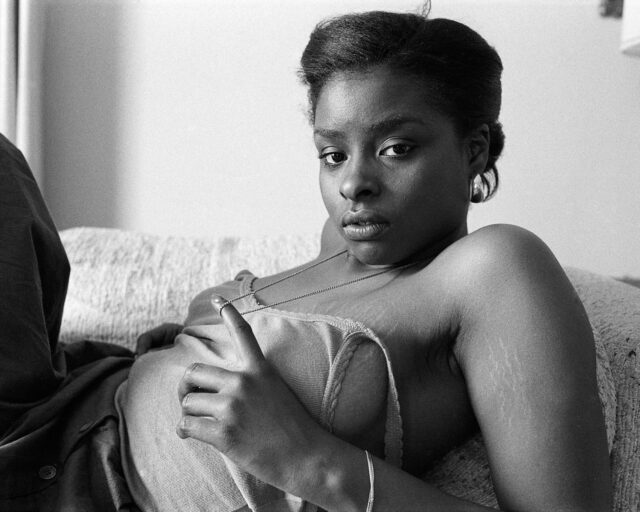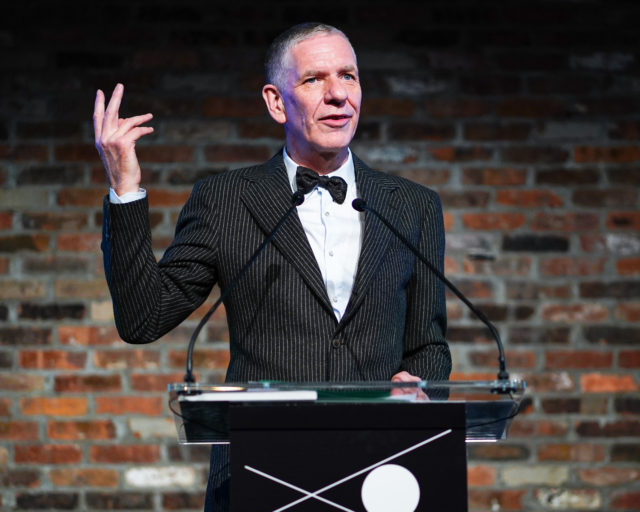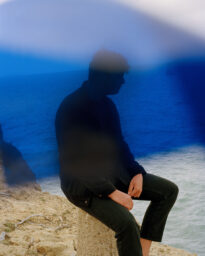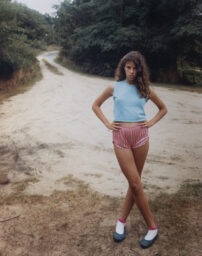The Poet of Black Baltimore
For Devin Allen, life in Baltimore is about the beautiful struggle.

Devin Allen, from the book A Beautiful Ghetto, 2017
Courtesy the artist
Beyond the hyperbolic narratives about Black Baltimore that tend to circulate in mainstream news cycles—the blight, the crime, the poverty—is a story of tenderness and resilience, of love and resistance. Devin Allen is interested in that story. And after capturing images of the Baltimore protests that occurred in the wake of the death of Freddie Gray, in 2015, Allen has amassed a vault of photographs that depict the complicated poetry of his city. Indeed, his new photobook, A Beautiful Ghetto (2017), is a visual love note to Black Baltimore that could have only been produced by a Black Baltimorean. On the occasion of the release of the publication and accompanying exhibition at The Gordon Parks Foundation, I spoke with Allen about his personal relationship to photography and the beauty of the city that he calls home.
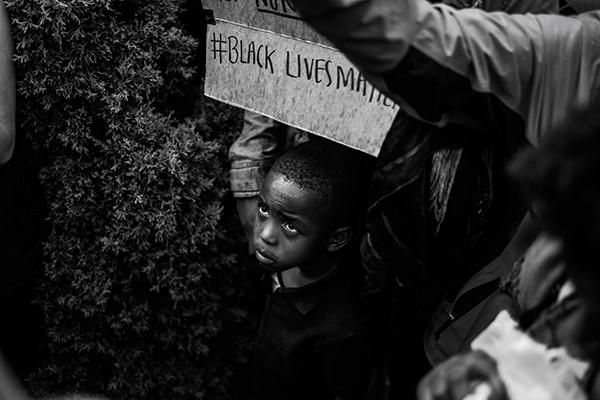
Devin Allen, from the book A Beautiful Ghetto, 2017
Courtesy the artist
Jessica Lynne: Let’s start before Freddie Gray, before the uprising in Baltimore. One of the things I’ve been thinking about is the relationship we form with photography long before we become photographers or become interested in thinking about photographs critically. What was your early relationship to photography? Were you the kid taking photographs at family gatherings? What brought you to the medium?
Devin Allen: I started photography in 2013. My grandmother actually helped me get my very first camera. She would always carry around a camera and document everything as we were growing up—every family get-together, those moments at a family cookout—and that’s when I realized that my grandmother was actually a photographer. I understand how important it is to savor and keep those moments. But, as a kid, I never in a hundred years would have thought that I would become a photographer.
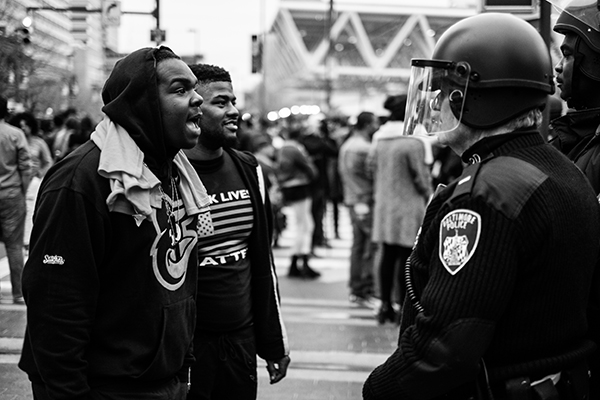
Devin Allen, from the book A Beautiful Ghetto, 2017
Courtesy the artist
Lynne: As you began documenting Baltimore, especially in the wake of Freddie Gray’s death, did you have a sense of how important your images would become, not only to the way we, as a country, grapple with Gray’s death, but also to these longstanding, systemic circumstances that led to this that tragedy?
Allen: In Baltimore, we already have a bad rep, we’re only known for the violence, we’re known for having a high murder rate. So, my goal was to tell the story of West Baltimore, not just the death of Freddie Gray, but also what Freddie Gray saw leading up to his death. I wanted to show the positive but also the negative aspects. I didn’t plan for everything to get as big as it did; I just wanted to show the world the Baltimore that I knew. I knew that those bigger publications and media outlets don’t actually know anything about Baltimore; they only want to focus on one aspect of a project. I wanted to tell everything else in between: I wanted to talk about the cookout, the block party. It’s not about a burned-down city; there’s so much more that happened after the death of Freddie Gray, and I wanted to show the resilience of the people. We were, like, hopped-up, and that’s one of the main reasons why I said I’d document it. I never thought it would get this big.
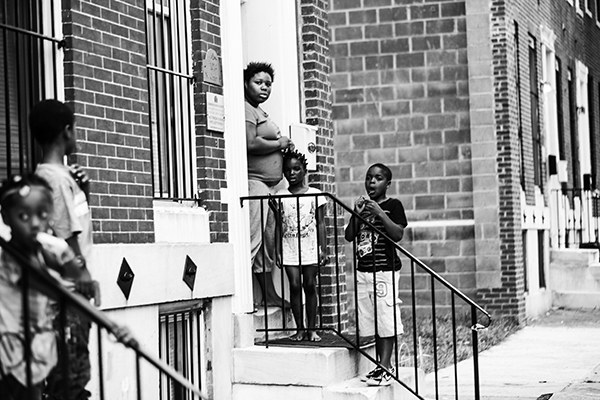
Devin Allen, from the book A Beautiful Ghetto, 2017
Courtesy the artist
Lynne: In her essay for your book, “The Boisterous Demand of Black Baltimore,” Keeanga-Yamahtta Taylor writes something that really stuck with me: “Black life is not only about hardship, it is also about poetry, play, celebration, curiosity, tradition, and what some have referred to as, ‘the beautiful struggle.’” What should people know about the poetry of Black Baltimore that doesn’t necessarily get to exist in the mainstream media conversation?
Allen: The thing with Baltimore is that Baltimore is a very small city, everybody knows everybody. It’ll take you fifteen to twenty minutes to get around the whole city. A lot of people interact with people’s cousins, mothers, we grow up together and friends become family, and that’s the beautiful thing that people don’t understand. I’m really just talking about a city that has been neglected, forever.
There’s a thing we say: If you grow up here, you can survive anywhere. And I honestly believe that. I had my own trials and tribulations, like gun violence, which has heavily affected my life. I stopped counting at about twenty friends taken. I stopped counting. I lost my first friend at age sixteen or seventeen; he was shot. The death never stops. I buried two friends just over the summer this year.
You know, it’s like you said, it’s Black poetry, and that’s what it is. Violence is only one aspect of Baltimore. When the uprising was going on, a lot of people didn’t know that all of the basketball coaches, the popular hairdressers, people who have clothing lines, local business owners—they were all at the basketball courts figuring out how we can get our kids off of the streets. The reaction was that we should be proactive about it, to turn that negative into a positive. Baltimore is a city that fights for its own. That’s why I love my city so much.
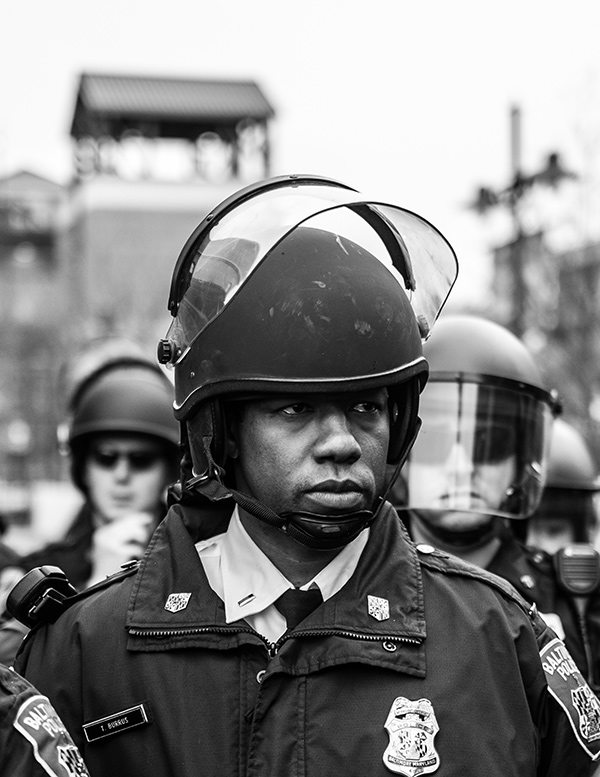
Devin Allen, from the book A Beautiful Ghetto, 2017
Courtesy the artist
Lynne: I really like that—it’s the beautiful struggle. When did you realize that all of this documentation and storytelling work would become a book? And was it daunting to begin the process of sifting through all of your images to decide what was going to complete the final publication?
Allen: A Beautiful Ghetto started off with a hashtag, because I could not find the words to really describe my city. I met this guy named Mitchell Duneier, who wrote a book called Ghetto: The Invention of a Place, the History of an Idea (2016), and he came to Baltimore, and I took him to the local crab place. You know, being a kid from West Baltimore, I’m sitting here with Mitch Duneier from Princeton, just talking to him, and it was unreal. And he was like, “You should do a show. What would you name your show?” And I said, “I would name it A Beautiful Ghetto.” I wanted to put a bittersweet taste in your mouth. That’s the goal. And he said, “Do it.” And they took me to Philadelphia, and I did the show A Beautiful Ghetto, and that’s when I met Keeanga. I did a panel discussion and she basically narrated my show.
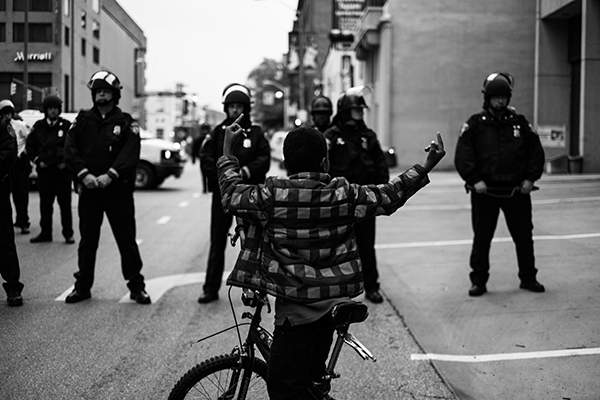
Devin Allen, from the book A Beautiful Ghetto, 2017
Courtesy the artist
Lynne: And the exhibition became the book? What was the selection process like?
Allen: Every image is very personal. The thing is, I don’t repeat frames, so every shot you see is as you see it. I don’t hold down the shutter and just let my shutter run. I literally go out and get the shot. I’m very particular and every shot is important to me; I didn’t want to take the easy way out. I also wanted to keep the book as cheap as possible, but I still wanted a good quality book. So, we started at like one thousand images, got it down to five hundred, and then 120, and then we had a book.
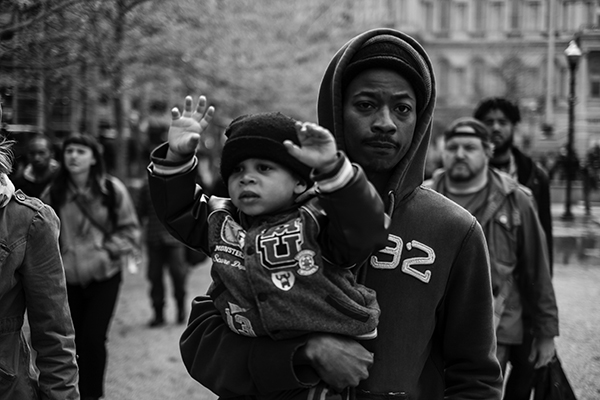
Devin Allen, from the book A Beautiful Ghetto, 2017
Courtesy the artist
Lynne: I love that the book, in some way, becomes a community ode to Baltimore. Looking at the images, they’re extremely sharp, but there’s also a deep feeling of tenderness, not only for the built environment of Baltimore, but also for the people. There’s an honesty and an urgency to them. How have people responded to the book, and your visual narrative of the city?
Allen: You know, the response has been amazing. I shoot with my heart and my eyes. My heart is in everything. A lot of the people that you see in the book, they are my friends. These are the people that I know, that I see every day. So, the book, for me, is a love letter to Baltimore. This is my letter to Baltimore. This is how I feel, this is love right here.
And the biggest thing is that, for my generation, coming from Baltimore, there has never been a book like this, a book for Baltimore by somebody from Baltimore. You can get the book for fifteen dollars on Amazon, and you can’t beat that. When I first started photography, I wanted to get Gordon Parks’s book, but it was $125 at Barnes & Noble and I couldn’t afford it. I would go to Barnes & Noble and get a whole bunch of inspiration to bring back to my work. But for the kids who are on Instagram now and want to be photographers, they can peek at my book. I figure they can get inspired to document themselves. I teach, I give out cameras, and so hopefully there will be someone better than me, coming behind me.

Devin Allen, from the book A Beautiful Ghetto, 2017
Courtesy the artist
Lynne: I know that Gordon Parks is a big inspiration for you, but there’s another photographer by the name of Joseph Rodriguez, who I’m also reminded of when I think of your work. Are there other people who you are learning from at the moment, who you feel like you are in conversation with, either conceptually or formally speaking? Who else are you looking at for your own continued growth as a photographer?
Allen: Anthony Barboza, right now, because I want to get more into portraiture. Ruddy Roye, who’s one of my favorites, I always follow him. And, of course, Jamel Shabazz, with all his hip hop ’80s stuff and portraiture. I’m getting a lot of inspiration from a lot of older black photographers in helping myself grow.
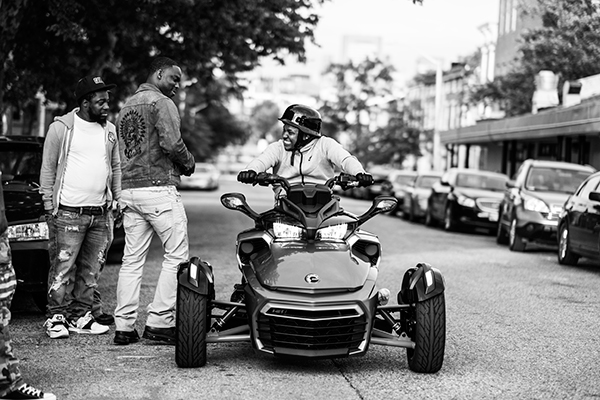
Devin Allen, from the book A Beautiful Ghetto, 2017
Courtesy the artist
Lynne: What’s next for you? Are you still interested in working in some capacity with mainstream national publications? What does the next year look like?
Allen: Like I said, I always live life winging it. The biggest thing, now that the book is out, is to really get that moving, get it out as much as I can. Even though my career has grown, it’s still a struggle. I’m still a starving artist, you know I’m still struggling. I wanted to stay in Baltimore, I didn’t want to just disappear, move to New York, and forget my community, so I took a job with Under Armour as my nine-to-five, so it helps me stay in Baltimore. I’m learning about the commercial side of the business; I’m actually doing more photo-editing.
As a Black photographer, it’s always going to be difficult to navigate—so many people say this. Hopefully this book will open up opportunities for me to do more photojournalism, to get more stories, but I also definitely want to dive into the fashion realm, as soon as possible. I want to be one of the greatest photographers of my generation, that’s the ultimate, long term goal. And then, I want to get into directing. I definitely want to bring back those Spike Lee films, and work on projects like that. I just want to do it all.
Devin Allen: A Beautiful Ghetto was published by Haymarket Books in September 2017.










